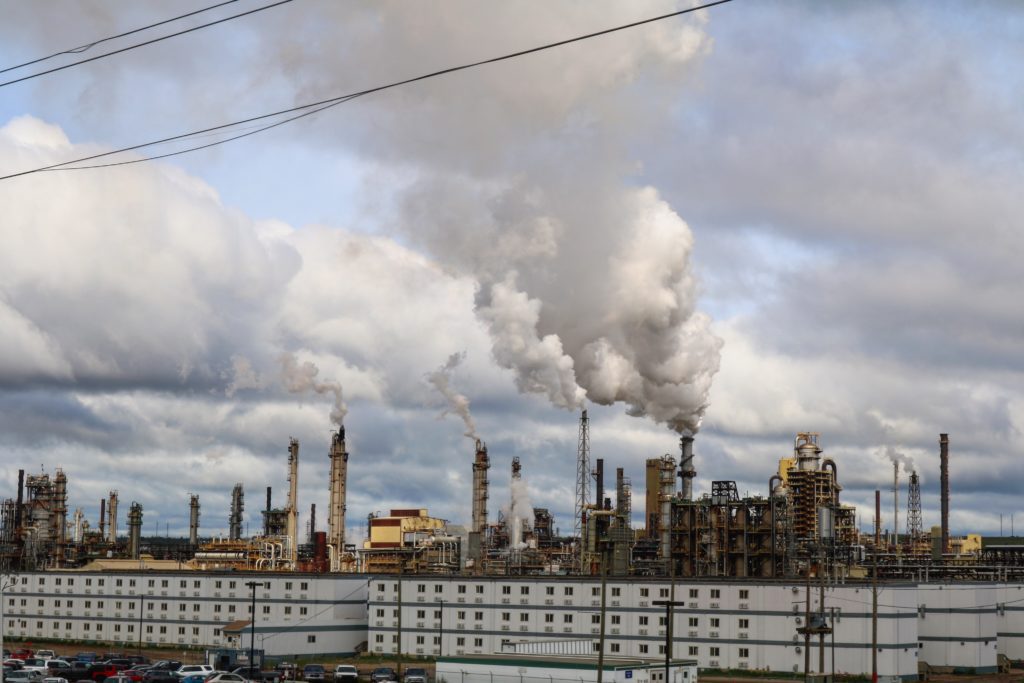The climate crisis is here.
2023 was the hottest year on record
The degree of devastation across Canada in 2023 was difficult to comprehend. People lost their homes, communities and livelihoods. Some even lost their lives.
Last year’s wildfire season was Canada’s most destructive on record, burning more than 18 million hectares across the country from British Columbia to Nova Scotia. The wildfires forced more than 230,000 people from their homes, with nearly 300 evacuation orders issued. Entire communities, like Yellowknife, Sept Iles and Fort Chipewyan were evacuated. Homes were burnt down.
Fires in British Columbia cost the provincial government $1 billion for firefighting and piling up almost $750 million in insurance claims.
TAKE THE PLEDGE TO STAND UP FOR CLIMATE ACTION
The wildfires prompted waves of air quality warnings across the country. In fact, Canadian cities had some of the worst air quality on the planet. And because of health impacts – the smoke damages lung function – people, and especially children, were warned not to go outside. The risk was so high in Edmonton that the city launched its first extreme weather response to poor air quality. Ottawa cancelled all outdoor recreational programs, closed outdoor pools, and issued no-swim advisories at city beaches. The health costs over just one week in Ontario amounted to $1.3 billion.
And it wasn’t just wildfires. A series of storms battered Ontario in July and August, causing almost $350 million in damage. Many cities – including Calgary, Edmonton, Winnipeg, Regina, Québec City and Halifax – experienced flooding, which caused damage to personal property and infrastructure. Nova Scotia was hit by torrential downpours – an entire summer’s worth of rain fell in just a couple of hours – resulting in the devastating loss of four people, including two young children.
 Heatwaves were also an issue across the country. Each month from June to December was warmer than any previous year. July and August 2023 were the hottest months ever recorded globally. Lytton, BC was Canada’s hot spot in 2023 at 42.2°C on August 15. Drought stretched from coast to coast, in every province or territory. Potato growers in Prince Edward Island were applying more irrigation water in May than in an average July. In British Columbia, millions of residents and commercial customers were asked to conserve precious drinking water. Ranchers had to sell their cattle because they didn’t have the hay to feed them. Due to low water levels on the Mackenzie River in the Northwest Territories, transport companies had to truck – rather than float on barges – goods and commodities at much higher costs.
Heatwaves were also an issue across the country. Each month from June to December was warmer than any previous year. July and August 2023 were the hottest months ever recorded globally. Lytton, BC was Canada’s hot spot in 2023 at 42.2°C on August 15. Drought stretched from coast to coast, in every province or territory. Potato growers in Prince Edward Island were applying more irrigation water in May than in an average July. In British Columbia, millions of residents and commercial customers were asked to conserve precious drinking water. Ranchers had to sell their cattle because they didn’t have the hay to feed them. Due to low water levels on the Mackenzie River in the Northwest Territories, transport companies had to truck – rather than float on barges – goods and commodities at much higher costs.
2024 likely to bring more devastation
2024 is predicted to be hotter, drier and smokier than 2023. Leading scientists are predicting that 2024 will be even warmer as the global mean temperature continues to rise. This winter brought a bad combination of above-normal temperatures and below-normal snowpack.
As of March, 82 per cent of Canada’s agricultural landscape is facing ‘abnormally dry’ or drought conditions, with Alberta bracing for unprecedented water shortages.
There are over 100 fires already burning in Alberta and British Columbia. Communities are once again being put on evacuation notice. With fires so widespread and destructive, insurance companies have warned protection could cost Canadians more.
Heat waves pose another major risk to people’s health and safety. The deadliest climate disaster in Canadian history was the heat dome (abnormally hot temperatures that lasted several days) that hit British Columbia in 2021, causing at least 600 deaths.
 Fossil Fuel Companies are to Blame
Fossil Fuel Companies are to Blame
It’s clear that global warming is bringing hotter and drier weather. That means worsening wildfires, heatwaves, drought and increasingly unpredictable and extreme precipitation patterns.
Greenhouse gas emissions are causing the climate crisis. And over 75 per cent of greenhouse gas pollution comes from producing and burning fossil fuels. The only way to avoid increasing levels of climate catastrophe is to keep oil, gas and coal in the ground and to shift to clean renewable energy.
Let’s also remember that it didn’t have to be this way. Decades of obstruction by the fossil fuel industry have led us to the hotter and more extreme weather.
 Companies like Exxon and Imperial have been studying the impacts of their oil and gas products on the climate since the 1970s. That means they’ve known for the past 50 years that their products were going to destroy our planet’s ability to sustain life. Rather than alert people and curtail their operations, they have instead worked to deceive the public and decision-makers about the threat. They invested massively into huge misinformation campaigns to discredit climate science and climate solutions. They lied to the public. They funded climate denial groups. They fought against any rules that might impact their profits.
Companies like Exxon and Imperial have been studying the impacts of their oil and gas products on the climate since the 1970s. That means they’ve known for the past 50 years that their products were going to destroy our planet’s ability to sustain life. Rather than alert people and curtail their operations, they have instead worked to deceive the public and decision-makers about the threat. They invested massively into huge misinformation campaigns to discredit climate science and climate solutions. They lied to the public. They funded climate denial groups. They fought against any rules that might impact their profits.
If oil and gas companies hadn’t spent the last 50 years doing everything in their power to block climate progress, we would be in a very different place today.
What’s the Solution? Vote for someone who will make climate action a priority
Of course the problem isn’t just Big Oil activities – it’s also that governments are listening to them. That means billions in fossil fuel subsidies, weak regulations and no real plans to address the need to phase out fossil fuels.
We need governments at every level – municipal, provincial and federal – that will make climate action a priority. This means governments that stop handing out billions to fossil fuel polluters. It means governments that invest in clean renewable energy and help people, especially low income people, switch from polluting gas heating and cooking to cleaner and healthier electric options. This means governments that invest in public transit and bike lanes so people can get around without a car.
 Climate action will not only lead to cleaner air and prevent ever worsening climate disasters t, but it will make life more affordable too!
Climate action will not only lead to cleaner air and prevent ever worsening climate disasters t, but it will make life more affordable too!
Canada has the technology, the opportunities and the people to be a climate leader. What’s missing is political leadership. Let’s make sure we’re election climate leaders.
The next time you vote for a city councilor or mayor, for an MPP/MLA or for the MPs that will make up the next federal government, find out which candidates will stand up to big oil and make climate action a priority to protect you and your family from climate disasters.






 Fossil Fuel Companies are to Blame
Fossil Fuel Companies are to Blame 


